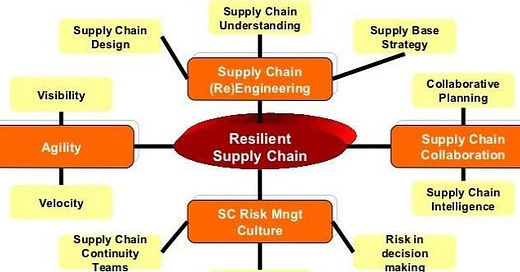Harnessing the power of supply chain risk management: Everything you need to know (Latest news)
Navigating the Evolving Landscape: Trends and Strategies in Supply Chain Risk Management 🔄
Supply Chain Risk Management (SCRM) is the essential process of identifying, assessing and mitigating potential risks and uncertainties within a supply chain. Its main objective is to ensure the continuity of supply chain operations while minimising disruptions such as product recalls, production delays and quality problems.
Effective SCRM requires a proactive approach that encompasses risk assessment, contingency planning and ongoing monitoring. However, the complexity of data analysis and organisational buy-in can pose significant challenges. Nevertheless, as supply chains and regulations become increasingly complex, SCRM is a vital operation for every business.
To meet these challenges, organisations are turning to AI and machine learning (ML)-based software solutions to streamline SCRM processes. In addition, market growth is being propelled by increasing government regulations and standards aimed at improving supply chain transparency and risk management.
In today's collaborative environment, companies are partnering with suppliers and other stakeholders to share information and collectively manage risk. For example, SAP Ariba and PwC recently introduced a co-innovation strategy to help organisations achieve their ESG and net-zero objectives.
The supply chain risk management market is segmented by component, end-use sector, company size and region. Sectors such as retail, healthcare, manufacturing and transportation are at the forefront of adopting SCRM practices, with North America, Europe, Asia-Pacific and the LAMEA region leading the market analysis.
The global supply chain risk management market size was valued at $2.9 billion in 2021, and is projected to reach $6.9 billion by 2031, growing at a CAGR of 9.2% from 2022 to 2031.





